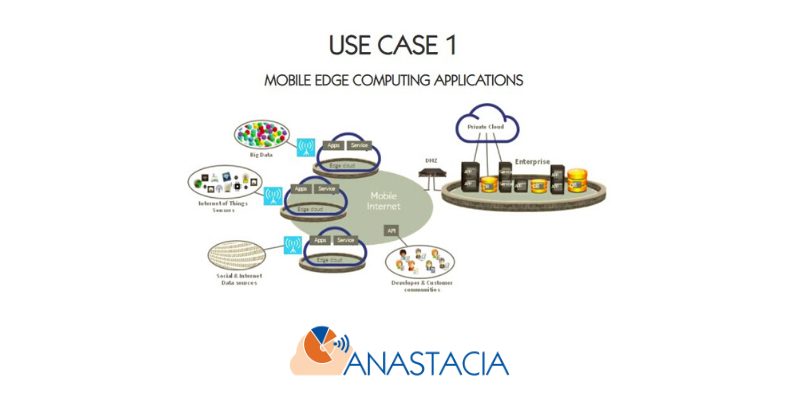
Error message
Warning: Use of undefined constant REQUEST_URI - assumed 'REQUEST_URI' (this will throw an Error in a future version of PHP) in eval() (line 2 of /var/www/html/web/modules/php/php.module(80) : eval()'d code).Mobile Edge Computing applications

Massive Internet of Things (IoT), either active or dummy devices (sensors/machines), will compose a significant integral part of Future Internet (FI). Besides the internal Machine-to-Machine (M2M) communications, the devices will collect huge amount of sensory data regarding themselves and/or their surrounding environments (e.g. temperature and humidity). The data will be traditionally sent to remote data centers/Cloud for further analysis by employing advanced data analytics. That analysis requires high computation capabilities, high bandwidth and low latency. The actions upon the targeted IoT devices will be issued according to the analysis results. In order for the devices to promptly react to the issued actions which are still valid to the current situation, the (extremely) low latency is an essential requirement. Moreover, due to the massive dense deployment of IoT devices, to ensure the targeted device receives the actions exactly on it, highly accurate location data is required. The Mobile Edge Computing (MEC) system deployed at the edge of the mobile network is able to complement the remote data centers, and holds appealing features that are able to fulfill the above-mentioned requirements.
Deploying MEC servers closer to network access points can bring several advantages by reducing the global application latency (computing latency and round-trip time delay), increasing the availability and preventing the emergence of network bottleneck in case of traffic surge. The location of the MEC system is proximate to the IoT devices, which enables fast responses to the real-time events in the IoT domain. Furthermore, its compute/storage capabilities enable the MEC system to perform data regulation and manipulation at the edge, e.g. filtering out inconsequential data, which will offload from the central processing and the backhaul/core network. The configuration of IoT devices can also be done at the edge by taking advantages of the MEC processing capabilities, which will potentially make the IoT devices simpler, smaller, and cheaper, and the IoT domain less vulnerable and more secure.
Ultimately, a MEC ecosystem leveraging SDN and NFV will be formed at the edge of the mobile network, which is a complex and sensitive multi-vendor environment. SDN represents a disruptive change in the way networks are architected, built, and operated. SDN opens up traditionally closed, single-vendor networks and brings competition and innovation to bear on some historically unsolvable networking problems. NFV is commonly described as a network architecture concept that uses IT virtualization technologies to virtualize entire classes of network node functions (firewall, DPI, router, probe, encoder, crypto…) into building blocks that may be connected or chained together to create communication services. Some of the most promoted benefits of NFV include: flexibility, scalability, security and automation. Though SDN and NFV bring an extremely relevant improvement to the previous technologies, in particular in the deployment of MEC server, they also pose new challenges for what concerns cybersecurity, which ANASTACIA technology, with its holistic approach to security, will support addressing.
Owner:
Resources for EU Research
Resources for SMEs
News & Events
Reports
Cyberwatching.eu has received funding from the European Union’s Horizon 2020 research and innovation programme under grant agreement No 740129. The content of this website does not represent the opinion of the European Commission, and the European Commission is not responsible for any use that might be made of such content. Privacy Policy | Disclaimer / Terms and Conditions of Use
